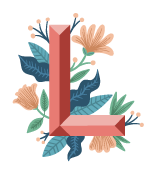cfds2022s
CFDs or Contracts in Differences (CFDs) are a common choice among traders and for good reasons. With CFDs aid it’s simple to expose yourself to a diverse assortment of underlying asset and instruments, without actually holding the instruments. You can even make money from index movements. Another benefit that comes with CFDs are that they […]
CFDs or Contracts in Differences (CFDs) are a common choice among traders and for good reasons. With CFDs aid it’s simple to expose yourself to a diverse assortment of underlying asset and instruments, without actually holding the instruments. You can even make money from index movements.
Another benefit that comes with CFDs are that they remove the want for short-selling. If you feel that the price of an investment is going downwards, choose the appropriate type of CFD. It is not necessary to worry about the risk of a high cost and risky short-selling is an enormous benefit for traders who wish to be actively involved even when prices go down.
Corporations, financial institutions and large companies too use CFDs to hedge their positions. You open a position that could be profitable if one of your positions is losing. Anyone who buys shares in the company A may hedge the position by opening an CFD which will yield profits when the value of shares in Company A drops to a certain level.
Since there are no exchanges of assets when CFD trading, broker charges tend to be very small. Some brokers do not charge an amount; instead, they earn money on the spread instead. If you decide the broker you want to work with consider the entire situation into account. Many CFD brokers are online, which means there’s no reason not to use one that’s not appropriate for your needs. Create an CFD account with a broker who offers these services as well as CFDs you want to access.
The two prices
CFD prices are quoted in two denominations:
-Buy price (also called offer price)
Sell price (also called bid price)
The selling price or bid rate is the price at which you open the short CFD and the buy price/offer price is when you open the long CFD.
The selling price will usually be just a bit lower than the current market price, while the purchase price is generally somewhat higher than the current market price.
The difference between the two prices is called the spread. A lot of CFD brokers make money by distributing the spread instead of charging traders fees to open closing and opening CFDs. If you have any thoughts about the place and how to use u1hjkk1i, you can speak to us at the web site. In other terms the cost is covered in the spreadsince the buy and sell prices adjust to reflect the expenses of trading.
CFD trade lot sizes
Many platforms and brokers use a system where CFDs are traded in standardized contracts, also known as lots. The size of an individual contract will depend on the asset or instrument.
Example: If you want expose yourself to the silver price through CFDs, you’ll likely find a CFD based on 5,000 troy ounces silver. This is since 5,000 troy troys of silver is the value of silver in the market for commodities.
CFD trading can be (in this way) like trading directly on the underlying market with many brokerages and platform.
If you’d like to get exposure to 500 shares of Apple, you buy 500 Apple CFD. This is quite different from the way derivatives work (e.g. stock options) which is where the calculation of exposure is more complicated than traditional CFD trading.
CFD period
A typical CFD does not have a fixed expiry time but use CFD for long-term investments. If you do not close your CFD before the trading day is over, you will have incur an overnight fund charge. Additionally, leverage will raise the cost. The overnight funding cost is calculated on the value of the position and any leverage utilized.
The process of calculating profit/loss
What is the best way to determine the profits or loss from the CFD trade? Consider the total number of the contracts (deal dimension) and multiply it by the value in each (per the point that moves) Then, multiply it by difference in points between the opening price and closing price.

